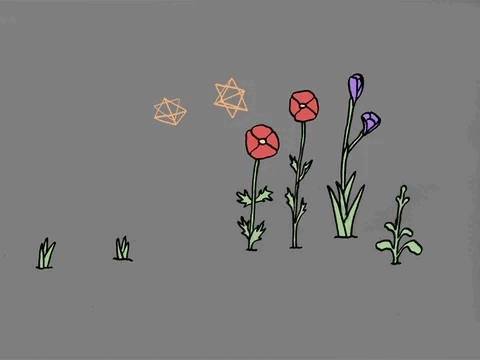Insights from a year spent exploring intrinsic motivation
One year and one day ago, I published the first post of my Substack newsletter, Why Would Anyone. This was weeks after winning the Attuned Writer Fellowship, a year-long program that sponsored me to explore, research and write about intrinsic motivation while also providing access to professional mentors.
This sweet gig has allowed me to try things out: new topics and formats, self-editing, planning and developing my own media project. I’ve written about subjects as varied as team building and debunking the growth mindset to extreme rock climbing and donating one’s body to science. I spoke with established authors and scholars including Nir Eyal, Ayelet Fishbach, Dan Pink and Amy Edmondson, among many others. They made me reflect about the importance of using our regrets to clarify our values, of showing leadership when we’re not the boss, of sharing our goals with the people we love, of scheduling spontaneity. 101 posts later, it’s time to reflect on what I’ve learned.
What I’ve learned about intrinsic motivation
When I wrote my first post, I viewed intrinsic motivation as a big, shining beacon that could—nay, should—guide our daily actions and decisions into a state of heightened clarity and presence. I pictured intrinsic motivation as something one either did or didn’t possess. (In that binary scenario, I didn’t have much of it.)
After exploring the subject for a year, and speaking with several psychology researchers and other experts, I understand things a little differently. There isn’t a caste of intrinsically motivated beings moving effortlessly through life, and then the robotic rest of us, hooked on cheap praise and rewards. There is a spectrum of different motivations, which will come into play depending on the activity and circumstances. At times, we might be pushed by extrinsic reasons (e.g. paying taxes on time to avoid late fees), or moved by our intrinsic drive (e.g. singing Waka Waka in the shower when no one’s listening). Many times, we’ll be somewhere in between—and that’s not a moral failure.
I still consider myself a people-pleaser, slowly peeling off layers of social conditioning to uncover recover my intrinsic motivation. If you also feel disconnected from your inner drive and unsure where to start, I believe there are a few things you can pay attention to (forgive me if it all sounds obvious—this stuff is simple, but not easy!):
Yourself
Let’s start with your body. Are you comfortable as you read this? Are your shoulders tense, your feet cold? What gives you energy, what depletes you? I once quoted Martha Beck as saying: “If it feels really good, maybe do more of that and you’ll get confidence in yourself. If it feels horrible, maybe do less of that and you’ll get confidence in yourself.” It can be small, yet significant—being more self-aware doesn’t mean you have to suddenly quit your job or spend 10,000 hours learning the harp.
Your boundaries
To assert what comes from us, it helps to know where we end and where other folks (“society!”) begin. This is closely linked to the above, but I’m giving it its own paragraph because it is important and not as obvious as it seems. Maybe your kid loves Lego, and just seeing the damn bricks makes you yawn. Maybe your parents are proud of your prestigious job—and your company is paying you good money—but it doesn’t feel quite right to you.
Your environment
The words intrinsic and extrinsic might bring a little confusion here. Intrinsic motivation doesn’t exist in a vacuum; it needs a nutritious environment that encourages our autonomy. I don’t mean vapid cheerleading, but people who care about our perspective and don’t push their own agenda onto us—be they parents, friends, teachers, bosses, colleagues, or strangers on the internet.
What I’ve learned about writing a newsletter
I had a few worries at the beginning of the project: Will my ideas dry up? Will it be a slog sometimes? Will people think I’m a fraud? These fears haven’t materialized! Here’s what I think helped:
Interest
D’uh! It’s hard to write 102 posts about something that bores you. I didn’t choose my main subject, but I do enjoy learning about intrinsic motivation in the first place, in particular about how it applies to children and creativity. I allowed myself to follow those (and other) interests as often as possible.
Structure
A month into the project, my Attuned mentor wisely suggested rotating between two formats: Three Things posts (using outside inspiration and sources to cover a range of topics) and personal and/or reported essays. This structure has made the workload more predictable and sustainable, giving me a consistent framework to fall back on during motivational wobbles.
Exploration
As a journalist, I’m trained to seek balance and authority. Writing frequent newsletter posts called for a different approach, favouring regularity over perfection, choosing and approaching my subjects like a columnist rather than like a news writer. I’ve gradually learned to be okay with sharing a work-in-progress rather than seeking immediate, definitive answers.
What I’ve learned about growing a newsletter
If some folks make writing a newsletter seem like an easy, lucrative side hustle, it isn’t. Building a readership on Substack (or elsewhere) isn’t easy; it can be done, even from scratch, but it's a slow and unpredictable process. Plenty of newsletter folks write good content for a well-defined niche and do all the “right” things to promote it, but still don’t grow a large audience, let alone earn a significant income from it.
What I’ve learned echoes the points I raised above about intrinsic motivation:
Why do you write? What do you enjoy writing about?
In the face of an uncertain outcome, you’d better enjoy the actual writing process and be genuinely interested in your subject matter. I for one prefer to spend time crafting and sharing posts that I care about, with the input of people I admire, than churning out pieces that are supposed to “do well” or help “build my platform” (and then make myself promote them with a meh in my heart). My “best” posts—the ones I enjoyed writing, and seemed to resonate with readers—were usually the ones I needed to read myself: i.e. writing helped me to figure out / formulate something for myself first.
There are no rules for success (a.k.a. ‘know thyself’ and all that)
As a newbie, I got lost in all the blog posts and how-to guides laying out recipes for a fast-growing list of subscribers in X easy steps. But there is no secret sauce that will work for every project. I’m learning to try things out according to my own criteria, tastes and tendencies, instead of from a place of duty or out of fear of getting it wrong. I try to pay attention to what feels good, important and sustainable for me and my life circumstances. When in doubt, I ask myself: Do I like this as a reader? Do I enjoy this as a writer? When in a lot of doubt, I seek opinions from a few people I trust and respect.
The Last Word
Ultimately, tending to our intrinsic motivation is not a finite outcome we can achieve once and for all, but a personal, open-ended process of discovery. For me, paying attention to it day after day has percolated into slight changes of perspective, moments of enjoyment, and generally accepting and working with what I am rather than trying to shoehorn myself into what I should be. I’m excited to keep up that spirit of exploration and learning, and grateful that you’ve followed the journey.
The Attuned Writer Fellowship may be at an end, but you can continue to read Tania’s writing on intrinsic motivation on Substack at Why Would Anyone, as well as in her new newsletter, Home Mixed Home.
Download The State of Motivation Report 2025. It’s free!
Tania Rabesandratana
Science Journalist & Attuned Writer Fellow 2021





